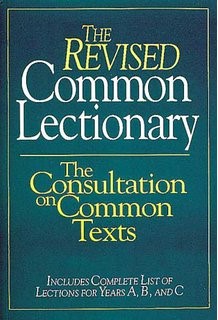This article is from pastor Sam Butler.

Several months ago I was challenged to consider using the lectionary to shape my preaching-teaching and worship planning. I say “challenged” because I was accustomed to “doing my own thing” in planning my sermons, and the idea of using someone else’s pre-determined structure did not sit well with me at first. Despite my initial resistance, I decided to give the lectionary approach a try. I began by studying the meanings of the seasons of the historic, orthodox Christian worship calendar as outlined in the lectionary, and then looking at the Scriptures that the lectionary assigns to each week throughout the year.
I was pleasantly surprised and decided to give it a trial run beginning with the season of Advent. I have now used the lectionary to structure worship in both a traditional church (with a sermon) and a fellowship group (with informal discussion). In both cases, the feedback has been positive, as has been my personal experience.
Note: the Revised Common Lectionary (RCL) is recommended (though not required) for use in all GCI congregations. It can be accessed online at http://lectionary.library.vanderbilt.edu/. An excellent resource to assist in its use is found at http://www.workingpreacher.org/.
In both traditional congregation and fellowship group settings I’ve experienced the clear advantages of following the lectionary. The RCL typically provides four scripture passages each week: two from the Old Testament (including one from the Psalms); one from the New Testament Epistles; and one from the New Testament Gospels. In all cases, the focus is on Christ with Old Testament texts prophetically pointing to him; texts from the Epistles focusing the church on his ongoing ministry through the Spirit; and texts from the Gospels sharing accounts of Jesus’ earthly life: birth through death, resurrection and ascension.

The RCL carefully selects Scripture passages to correlate with the progression of the Christian worship calendar, which begins its annual cycle in November with the season of Advent. Following this progression is good because it causes us to rehearse the full message of the gospel annually, and over the course of three years cover most of the texts of the Bible, which helps congregations receive a varied biblical diet.
Another benefit of following the lectionary is that doing so simplifies sermon preparation, and it gives others (like the worship team) a sense of where the pattern of services is headed, well in advance. This helps reduce the stress level for everyone. Note also that using the lectionary in a fellowship group helps relieve the burden of selecting discussion topics each week. Members can be given the lectionary passages ahead of time so they come prepared for the discussion. The facilitator can then have someone read the passages, then ask good questions to get the discussion going (and keep it going in a productive direction).
Here’s one more benefit in using the lectionary: it makes it possible to share the preaching/teaching load with others. I’ve been doing that, and in just a short time several people who would not have wanted to give a sermon have stepped up and, using the lectionary to guide their preparation, have done a good job (and they tell me they’ve enjoyed it!).



Please note that comments are moderated. Your comment will not appear until it is reviewed.